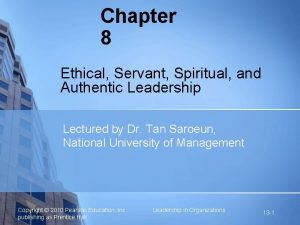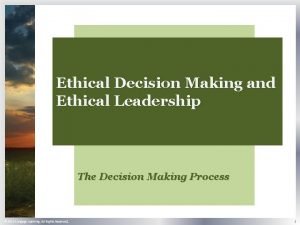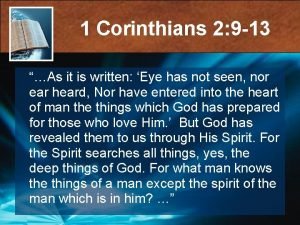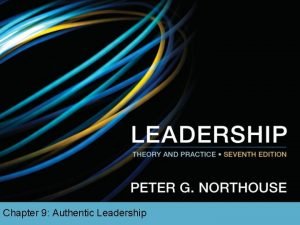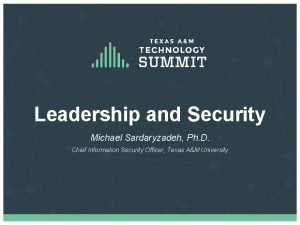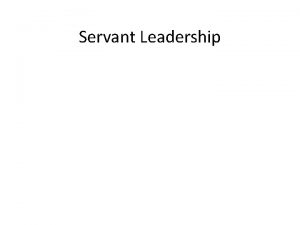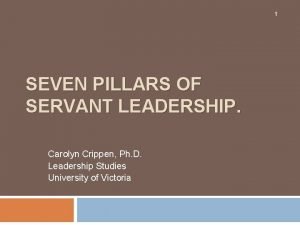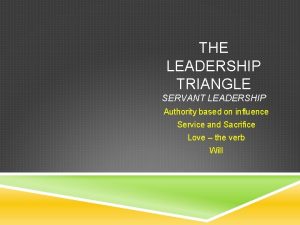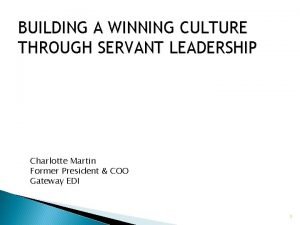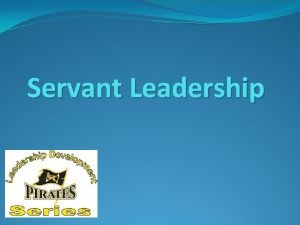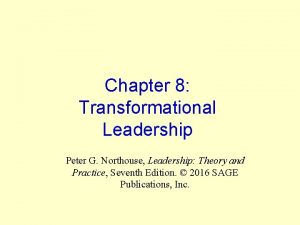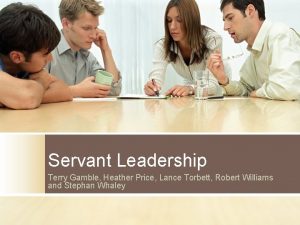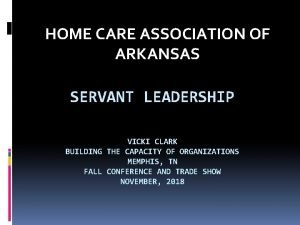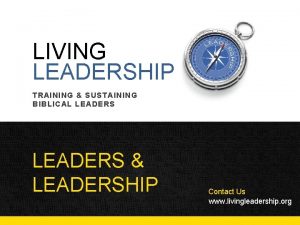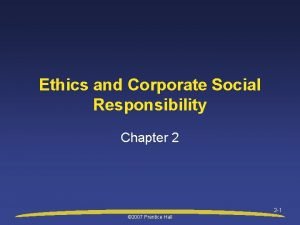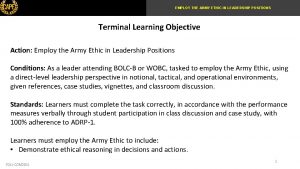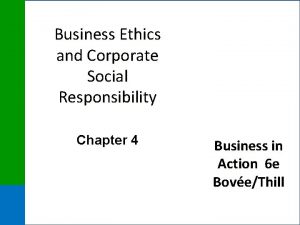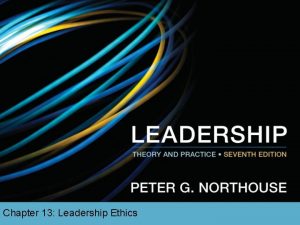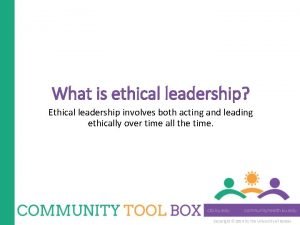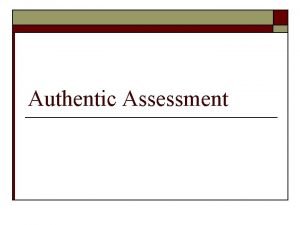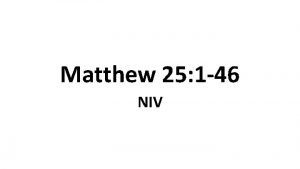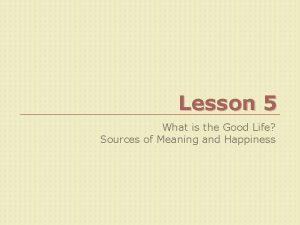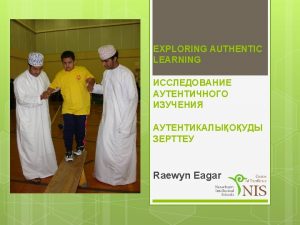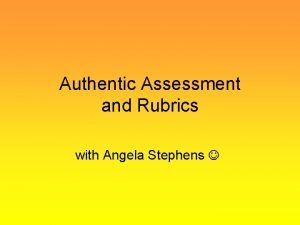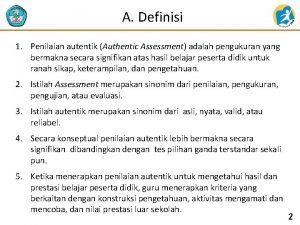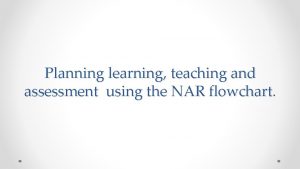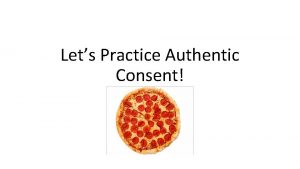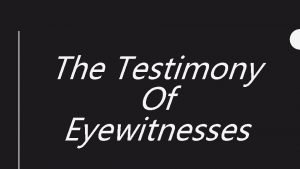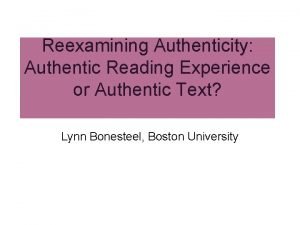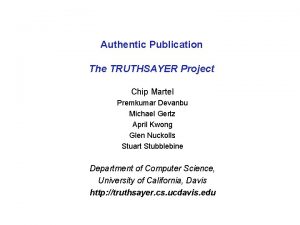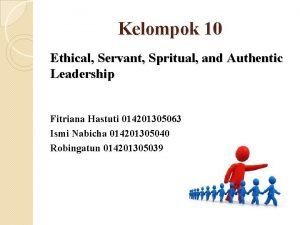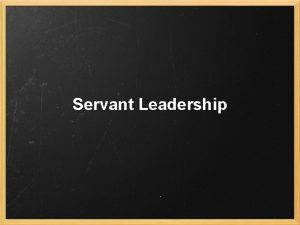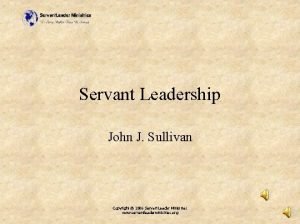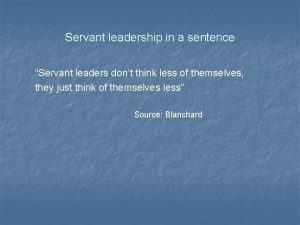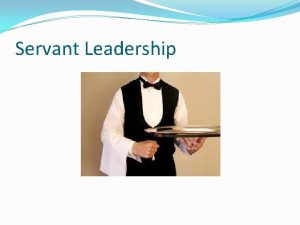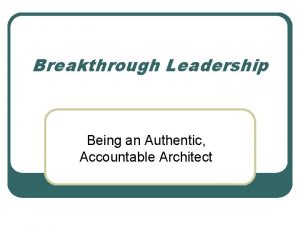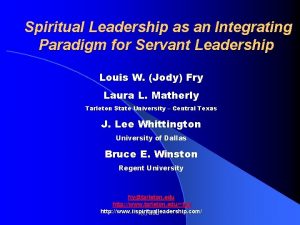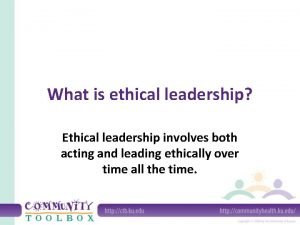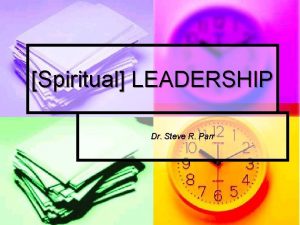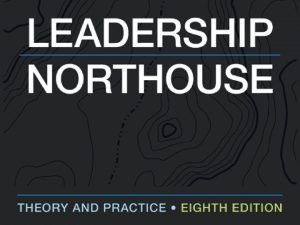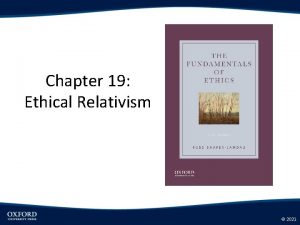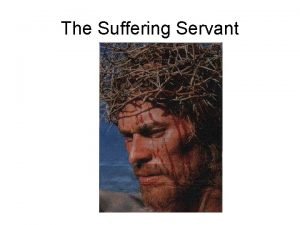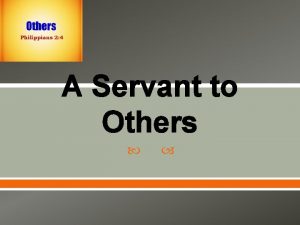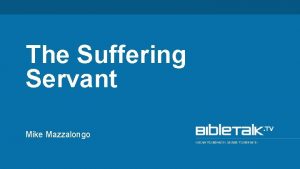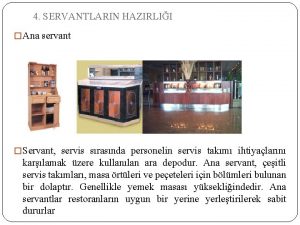Chapter 8 Ethical Servant Spiritual and Authentic Leadership























































- Slides: 55

Chapter 8 Ethical, Servant, Spiritual, and Authentic Leadership Lectured by Dr. Tan Saroeun, National University of Management Copyright © 2010 Pearson Education, Inc. publishing as Prentice Hall Leadership in Organizations 13 -1

Copyright © 2010 Pearson Education, Inc. publishing as Prentice Hall Leadership in Organizations 13 -2

Learning Objectives n n Understand different conceptions of ethical leadership. Understand the difficulties in defining and assessing ethical leadership. Understand the individual and situational influences on ethical leadership. Understand servant, spiritual, and authentic leadership theory. Copyright © 2010 Pearson Education, Inc. publishing as Prentice Hall Leadership in Organizations 13 -3

Learning Objectives (Cont. ) n n Understand the consequences of ethical leadership for followers and the organization. Understand limitations of the ethical leadership theories. Understand what types of research on ethical leadership are desirable. Understand some ways to promote ethical behavior and oppose unethical practices. Copyright © 2010 Pearson Education, Inc. publishing as Prentice Hall Leadership in Organizations 13 -4

Conceptions of Ethical Leadership has been defined in different ways, and definitions may include values, traits and behaviors. ភ ពជ អនកដកន ប បអភសម ច រតរវកណតត មវធផស ងៗគន ហ យនយមនយអ ចរ បបញចល តមល ចរតសគ លនងឥរយ បថ Executives identified several aspects of behavior and motives (e. g. honest, trustworthy, altruistic, fair) ន យកបរតបតតប នកត សគ លទដឋភ ពឥរយ បថ នង ចតតជរញប បន ( ភ ពសម តរង គរអ យទកចតតប ន គតពបរយ ជនអនកដទ យតតធម ( Several criteria are relevant for judging individual leaders, including the person’s values, stage of moral development, conscious intentions, freedom of choice, use of ethical and unethical behavior, and types of influence used. លកខណ វនចឆយ Copyright © 2010 Pearson Education, ម ន៖ Inc. តមល របសបគគល Leadership ប បន ព កពនធសរ បអនកដកន ថលងថល ង ដណ កក លអភវឌឍ in Organizations publishing as Prentice Hall សលធម ច តន ដ យសត ស រភ ពន ក រជរ សរ ស ក របរ បរ សឥរយ បថ 13 -5

Conceptions of Ethical Leadership n Personal Integrity and Ethical Leadership សចរតភ ពបគគលនង ភ ពជ អនកដកន ប បអភសម ច រ n Consistency between espoused and actual behaviors ភ ពបនសគន រវ ងឥរយ បថជរ មជរ ងនងពតបរ កដ n Behavior consistent with a set of justifiable moral principles ឥរយ បថបនសជ មយក រដ កគ លក រណសលធម អ យថលងថល ងប នតរមតរវ Copyright © 2010 Pearson Education, Inc. publishing as Prentice Hall Leadership in Organizations 13 -6

Dilemmas in Assessing Ethical Leadership It is easier to evaluate ethical leadership when the interests of the leader, the followers, and the organization are congruent and can be attained by actions that do not involve much risk. វ ង យសរលដ មបវ យតមល ភ ពជ អនកដកន ព ល ផលបរយ ជនរបសអនកដកន អនកដ រត ម នង អងគភ ពតរវចមនលមអ ងនង អ ចសមរ ចប នដ យសកមមភ ពដ លមនព កពនធភ ពបរថយចរ ន។ However, in many situations the influence process may involve ទ បជ យ ងណ កនងសថ នភ ពជ ចរ ន ដណ ក រឥទធពលជ បព កពនធ 1. Creating enthusiasm for a risky strategy or project, ក របងក ត អណរស ទរសរ បយទធស សតរឬគមរ ងបរថយបរថ ន Copyright © 2010 Pearson Education, Inc. publishing as Prentice Hall Leadership in Organizations 13 -7

Dilemmas in Assessing Ethical Leadership 2. Inducing followers to change their underlying beliefs and values, and, ក របបលអនកដ រត មអ យផល សបតរជន ជ មលដឋ ននងតមល នង 3. Influencing decisions that will benefit some people at the expense of others. Each type of influence involves some ethical dilemmas. ក រសមរ ចចតតដ លជ ឥទធពល នងផតលផលបរយ ជនដលមនសសខល ទ នងក រចណ យរបសអនក ដទ ។ Copyright © 2010 Pearson Education, Inc. publishing as Prentice Hall Leadership in Organizations 13 -8

Influencing Expectations An important leadership responsibility is to interpret confusing events and build consensus around strategies for dealing with threats and opportunities. ក រទទលខសតរវភ ពជ អនកដកន ដសខ នមយគក របកសរ យពរតតក រណភនតចរឡនងកស ងបរជ មតជវញ យទធស សតរសរ បព កពនធក រគរ មគហ ងនងឳក ស ។ How the leader influences follower perception of the risks and prospects for success is relevant for evaluating ethical leadership. ត អនកដកន ជ ឥទធពលដលក រយលដងរបសអនកដ រត ម សរ ប ភ ពបរថយបរថ ននងក ររពងទកសរ បភ ពជ គជយព កពនធកនង ក រវ យតមល ភ ពជ អនកដកន ប បអភសម ច រ ។ Copyright © 2010 Pearson Education, Inc. publishing as Prentice Hall Leadership in Organizations 13 -9

Influencing Expectations One proposed standard for ethical leadership in the case of risky ventures is for the leader to fully inform followers about the likely costs and benefits and ask followers to make a conscious decision about whether the effort is worthwhile. បទដឋ នដ កសន សរ បភ ពជ អនកដកន ប បអភសម ច រកនងករណក របរថយបរថ នគតរវអនក ដកន ផតលពតម នព ញល ញដលអនកដ រត មអពថល ដ មនងផលបរយ ជន ហ យសន អ យអនកដ រត មធវ ក រសរ ចចតតដ យសតអពត ក របរងបរ ងវ ម នតមល សមលមមឬអត ។ Copyright © 2010 Pearson Education, Inc. publishing as Prentice Hall Leadership in Organizations 13 -10

Influencing Beliefs and Values Even more controversial is an attempt to change the underlying value and belief of individual followers. Some writers contend that this type of leader influence is clearly unethical, even when the intended outcome is to benefit followers as well as the organization. ថវតបតត បដវ ទទ មទ រអ យបរងបរ ងផល សបតរករ មឥទធពល តមល នងជន របសបគគលអនកដ រត ម ។ អនកនពនធខល ជន ថ ឥទធពលរបសអនក ដកន បរភ ទន មនម នអភសម ច រចប សករឡ ត ពរ ព លលទធផលច តន សដ ទ ផលបរយ ជនអនកដ រត ម នង ផលបរយ ជនអងគភ ព ។ Copyright © 2010 Pearson Education, Inc. publishing as Prentice Hall Leadership in Organizations 13 -11

Influencing Beliefs and Values(Cont’d) Effective leaders engage members and other stakeholders in a dialogue to determine what types of changes are necessary and morally right for the organization. អនកដកន ម នបរសទធភ ពសនយ ជ មយសម ជកនងអនកជ បព កពនធដទ ទ តកនងកចចសនទន ដ មបកណតត បរភ ទន ក រផល សបតរអវដ លជ សទធច ប ចនងករមសលធមសរ បអងគភ ព ។ The process may (or may not) result in the emergence of a new set of shared beliefs and values. ដណ រក រអ ច (ឬមនអ ច) ផតលលទធ ផលជ បនទ នកនងក រដ កជន នងតមល រម The change, if it occurs, will reflect the influence of many leaders throughout the organization. ក រផល សបតរ (ប សនជ ក តឡ ង) នងឆល បញច ឥទធពលរបសអនកដកន ជ ចរ នត មរយ អងគភ ព ។ Copyright © 2010 Pearson Education, Inc. publishing as Prentice Hall Leadership in Organizations 13 -12

Multiple Stakeholders and competing Values The diverse consequences of a leader’s decision and actions complicate the evaluation of ethical leadership. លទធផលចរ នប បន ក រសរ ចចតតនងសកមមភ ពរបសអនក ដកន ធវ អ យសមគសម ញដលក រវ យតមល ភ ពជ អនកដកន ប បអភសម ច រ The same actions that benefit followers in some ways may also harm followers in other ways or at a later time. សកមមភ ពដចគន ដ លផតលផលបរយ ជនដលអនកដ រត ម ត មវធខល អ ចធវ អ យរងគរ ផងដ រដលអនកដ រត មត មវធដទ ឬព លករ យ ។ The same actions that serve the interest of some followers may be contrary to the interests of other followers Copyright © 2010 Pearson Education, Inc. Leadership in Organizations សកមមភ ពដចគន ខល ដ លបរ ផលបរយ ជនអនកដ រត មម publishing as Prentice Hall ចននអ ចផទយនងផលបរយ ជនរបសអនកដទ ។ 13 -13

Multiple Stakeholders and Competing Values Doing what is best for one type of stakeholder(owner) may not be what is best for others ( e. g. employees, customers, the community) ក រធវ អវៗដ លលអបផតសរ បអនកព កពនធ (មច សករមហន)អ ចមនលអ បផតសរ បអនកដទ ( នយ ជត អតថជន នង សហគមន ( Efforts to balance competing values and interests involve subjective judgments about rights, accountability, due process, and social responsibilities. ក របរងបរ ដ មបអ យម នតលយភ ព រវ ងតមល នងផលបរយ ជនព កពនធក រថលងថល ងគ លដ អពសទធ ក រទទលខសតរវ ដ យ ស រដណ រក រនងក រទទលខសតរវសងគមក រង រ ។ When stakeholder interests are incompatible, it is more difficult to evaluate ethical leadership. ព លផលបរយ ជនអនកព កពនធមនសគន វ ពប កខល ងកនងក រវ យតមល ភ ពជ ងនកដកន អភសម ច រ Copyright © 2010 Pearson Education, Inc. publishing as Prentice Hall Leadership in Organizations 13 -14

Multiple Stakeholders and Competing Values (cont. ) Ethical leadership is satisfied by maximizing economic outcomes that benefits owners while not doing anything strictly prohibited by laws and moral standard. ភ ពជ អនកដកន ប បអភសម ច រតរវបព ញដ យលទធផល ស ដឋកចចជ អតបរម ដ លផតលផលបរយ ជនដលមច សករមហនខណ មនប ន ធវ អវៗយ ងតងត ងដ លតរវហ មឃ តដ យចប ប ។ Copyright © 2010 Pearson Education, Inc. publishing as Prentice Hall Leadership in Organizations 13 -15

Determinants and Consequences of Ethical Leadership n n Individual Determinants of Ethical Leadership Situational Influences on Ethical Leadership Consequences of Ethical and Unethical Leadership Improving Research on Ethical Leadership Copyright © 2010 Pearson Education, Inc. publishing as Prentice Hall Leadership in Organizations 13 -16

Individual Determinants of Ethical Leadership With successive stage, the person develops a broader understanding of the principles of justice, social responsibility, and human rights. ជ មយដណ កក លជ គជយ បគគលអភវឌឍក រយលដងទលទល យពគ លក រណយតតធម ក រទទលខសតរវ សងគម នង សទធមនសស ។ At the lowest level of moral development the primary motivation is self-interest and the satisfaction of personal needs. នវករតទ បបផតន ក រអភវឌឍសលធម ក រល ក ទកចតតចបងជ ផលបរយ ជនខលនឯង នង ក របព ញចតតន តមរវក រក រង រ ។ Copyright © 2010 Pearson Education, Inc. publishing as Prentice Hall Leadership in Organizations 13 -17

Individual Determinants of Ethical Leadership At a middle level of moral development, the primary motivation is to satisfy role expectations and social norms determined by groups, organizations, and society. នវករតកណត លន ក រអភវឌឍសល ធម តមរវក រដបងគតរវបព ញក ររពងទកតន ទនងបទដឋ នសងគមតរវកណតដ យ ករម អងគភ ពនងសងគម ។ At the highest level of moral development, the primary motivation is to fulfill internalized values and moral principles. A person at this level may deviate from norms and risk social rejection, economic loss, and physical punishment in order to achieve an important ethical objective. នវករតក រអភវឌឍសលធមករតខពស ក រ ល កទកចតតចមបងគបព ញតមល នងគ លក រណសលធមផទ កនង ។ មនសសន ករត ន អ ចខសបល កពបទដឋ ននង ក រទ តច លខ ងសងគមប បភ ពបរថយបរថ ន ក រ ខ តបងស ដឋកចច នង ក រផតនទ ទ សដ មបសមរ ចគ លបណងប បអភសម ច រដ Copyright © 2010 Pearson Education, Inc. Leadership in Organizations សខ ន ។ publishing as Prentice Hall 13 -18

Situational Influences on Ethical Leadership The organizational culture and the formal reward system can encourage and support ethical or unethical behavior by leaders and members. វបបធមអងគភ ពនងបរពនធផតលរងវ នផលវក រអ ចល កទកចតតនង ជរ មជរ ងឥរយ បថអភសម ច រនងអតអភសម ច រ Unethical behavior is more likely when performance goals are unrealistically difficult, ឥរយ បថអតអភសម ច រទនងព លគ លដ បព ញក រង រពប កដ យមនបរ កដបរជ there is high pressure for increased productivity, ម នសមព ធខពសសរ បផលត ភ ពតរវក នឡ ង there is intense competition for rewards and advancement, ម នក រ បរកតបរជ ងសរ បរងវ ននងក រង រអភវឌឍ and the organization does not have strong cultural value and norms about ethical conduct and individual 13 -19 Copyright © 2010 Pearson Education, Inc. Leadership in Organizations publishing as Prentice Hall responsibility. នងអងគភ ពមនម ន

Situational Influences on Ethical Leadership Culture value and belief in the community or nation are another influence on ethical behavior. តមល នងជន វបបធមកនង សហគមនឬបរជ ជ តមយកជ កតត ជ ឥទធពលមយទ តទ ល ឥរយ បថប ប អភសម ច រ Follower charateristics are another aspect of the situation that can encourage unethical leadership. Unethical leadership is more likely when followers believe that formal leaders should have strong position power and obedience to authority is necessary. បគគលកលកខណ អនកដ រត ម ជ ទដឋភ ពមយទ តន សថ នភ ពដ លអ ចល កទកចតតភ ពជ អនកដកន ប បគម នអភ Copyright © 2010 Pearson Education, Inc. Leadership in Organizations សម ច រ។ ភ ពជ អនកដកន បរភ ទន ទនងជ ព លអនកដ រត មជ ជ កថ អនកដកន publishing as Prentice Hall 13 -20

Consequence of Ethical and Unethical Leadership Many different measure have been used to assess the effects of ethical leadership on followers, and they include some criteria seldom used in earlier leadership research. e. g. Follower value and ethical value , follower self-awareness, follower feelings of spiritual fulfillment). ក រវ សវ ងខសគន ជ ចរ នធល បបរ ដ មប វ យតមល លទធផលន ភ ពជ អនកដកន ប បអភសម ច រល អនកដ រត ម នង ពកគ រ បបញចលលកខណ វនចឆយខល កមរបរ កនងក រសរ វជរ វភ ពជ អនក ដកន ពដបង ។ ឧទ ហរណ តមល នងតមល សលធមរបសអនកដ រត ម ក រភញ ករលកខលនឯង របសអនកដកន អ រមមណន ក របព ញសម រតរបសអនកដ រត ម ។ Copyright © 2010 Pearson Education, Inc. publishing as Prentice Hall Leadership in Organizations 13 -21

Consequence of Ethical and Unethical Leadership Abusive supervision includes using power and authority to humiliate, ridicule, bully, and otherwise mistreat subordinates (Tepper, 2000). Such behavior is usually regarded as a form of unethical leadership. ក រគរបគរងបព នរ បបញចលក របរ អណ ចនងអ ជញ ដ មបធវ អ យខចខ តដលស ចកតថល ថនរ ក តបនថយស រសខ ន បព ន អនកដទ នងប ពន ទ បព របព នអនកករ មបងគ ប ។ ឥរយ បថប ប ហនងជ ទទ ច តទកជ ទមរងភ ពជ អនកដកន ប បគម នអភសម ច រ ។ Copyright © 2010 Pearson Education, Inc. publishing as Prentice Hall Leadership in Organizations 13 -22

Improving Research on Ethical Leadership Leaders and followers influence each others’ values and ethical behavior. Over time the reciprocal influence processes can result in synergistic effects. Reciprocal influence also occurs between leaders and the organization culture. អនកដកន នងអនកដ រត មជ ឥទធពលដលតមល នងឥរយ បថប បអភសម ច រ ។ ន ព លដ លដណ រក រឥទធពលទ វញទ មកអ ចផតលលទធផល(រមគន )ធជ ងមន។ ឥទធពលទ វញទ មកក តឡ ងផងដ រ រវ ងអនកដកន នងវបបធមអងគភ ព Copyright © 2010 Pearson Education, Inc. publishing as Prentice Hall Leadership in Organizations 13 -23

Improving Research on Ethical Leadership Ethical leadership can be encouraged by strong cultural values and appropriate reward systems, but the cultural values and management systems are also influenced by the decisions and actions of the leaders. ភ ពជ អនកដកន ប បអភសម ច រអ ចតរវល ក ទកចតតដ យតមល វបបធមនងបរពនធផតលរងវ នខល ងបនត តមល វបបធមនង បរពនធគរបគរងជ ឥទធពលផងដ រដ យក រសមរ ចចតតនងសកមមភ ព ដកន ។ Copyright © 2010 Pearson Education, Inc. publishing as Prentice Hall Leadership in Organizations 13 -24

Transforming Leadership and Adaptive Problem Solving n Transforming Leadership – Primary leadership role or function is to increase awareness about ethical issues ភ ពជ អនកដកន ផទ ររល ក តន ទភ ពជ អនកដកន ចមបងតរវ បងក នភ ពភញ ករលកអពបញហ អភសម ច រ n Adaptive Problem Solving – Primary role of leaders is to help followers confront conflict and find productive ways to deal with it ក រដ សរ យបញហ សមរបសមរល តន ទចមបងរបសអនកដកន តរវជយអនកដ រត មអ យ បរឈមមខនងជមល នងរកវធដ លអ យផលដ មបដ សរ យវ ។ Copyright © 2010 Pearson Education, Inc. publishing as Prentice Hall Leadership in Organizations 13 -25

Servant Leadership “Helping others to accomplish shared objectives by facilitating individual development, empowerment, and collective work that is consistent with the health and long-term welfare of followers. ” ក រជយអនក ដទ អ យសមរ ចប នគ លបណងដ យសមរបសមរលក រអភវឌឍបគគល ក រផទ រអណ ច នង ធវ ក រប បសមហភ ពដ លបនសជ មយសខភ ពនងសខ ម លភ ពរយ ព លវ ងរបសអនកដ រត ម ។ Copyright © 2010 Pearson Education, Inc. publishing as Prentice Hall Leadership in Organizations 13 -26

Conceptions of Servant Leadership n Integrity: Communicates in an open and honest way, keeps promises and commitment, acts in ways that are consistent with espoused values, admits and accepts responsibility for mistakes, does not attempt to manipulate or deceive people. សចរតភ ព ទ កទងទ នងវធសម តរងនងប កចហរ រកស ក រសនយ នងកចចសនស សកមមត មផលវដ លបនសទ នងតមល ដ គ ស រភ ពនងទទលសគ លក រទទលខសតរវសរ បកហស មនបរងបរ ងសមរបសមរល ឬ បភនតអនកដទ ។ n Altruism: enjoys helping others, is willing to take risks or make sacrifices to protect or benefit others, puts the needs of others ahead of own needs, volunteers for service activities that require extra time and are not part of the formal job requirements. បរតតភ ព តរ កអរជយអនកដទ ម នឆនទ បរថយបរថ នឬពលក រព រឬផលបរយ ជនអនក ដទ ដ កតមរវក រអនកដទ ធជ ងតមរវក រផទ លខលន សមគរចតតសរ បសកមមភ ពស វ ដ លតមរវ ម ងបនថ មនងមនផន កន តមរវក រក រង រផលវក រ ។ Inc. Copyright © 2010 Pearson Education, Leadership in Organizations publishing as Prentice Hall 13 -27

Humility treats others with respect, បរពរតតជ មយអនកដទ ដ យក រគ រព avoids status symbols and special privileges, ច សវ ងនមតត សញញ សរបចប ប នង បរ អភយឯកសទធពស ស admits limitations and mistakes, ស រភ ពក រកហតនងកហស is modest about achievements, សមហ តផលអពសន ដ emphasizes the contributions by others when collective effort is successful. សងកតធងនក ររមចណ កដ យអនកដទ ព ល ក របរងបរ ងប បសមហភ ពប នជ គជយ ។ Copyright © 2010 Pearson Education, Inc. publishing as Prentice Hall Leadership in Organizations 13 -28

Empathy and baling Help others cope with emotional distress, ជយអនកដទ មន អ យម នភ ពធញថបកនងអ រមមណ Encourages acceptance of diversity, ល កទកចតតអ យយល ពរមចរ នប ប Acts as a mediator or peacemaker, ធវ សកមមភ បជ អ ជញ កណត ល ឬ អនកសវ ងរកសនតភ ព Encourage forgiveness and reconciliation after a divisive conflict. ល កទកចតតល កល ងទ សនងបងរបបងរមគន ឡ ងវញបនទ បពជមល ប ងច កករមតចៗ Copyright © 2010 Pearson Education, Inc. publishing as Prentice Hall Leadership in Organizations 13 -29

Personal Growth encourages and facilitates the development of individual confidence and ability, ល កទកចតតនងសមរបសមរលក រអភវឌឍជន នងសមតថភ ពបគគល provide learning opportunities despite a risk of mistakes; ផតលឳក សសកស ទ បជ ម នភ ពបរថយបរថ នកហសឆគងកដ យ provide mentoring and coaching when needed; ផតលក រហវក ហ តបរ ជញ នងបងវកព លតរវក រច ប ច helps people learn from mistakes. ជយបគគលសកស ពកហសឆគង Copyright © 2010 Pearson Education, Inc. publishing as Prentice Hall Leadership in Organizations 13 -30

Fairness and Justice Encourages and supports fan treatment of people, speaks out against unfair and unjust practices or policies, opposes attempts to manipulate or deceive people or to undermine or violate their civil rights. ល កទកចតតនងជរ មជរ ងដលក របរពរតតរបសបគគលក អ យរករ យ នយ យបរឆ ងក របរពរតតឬគ លនយ ប យមនតរមតរវ មន យតតធម បរឆ ងនងក របរងបរ ងដ មបសមរលឬ បភនតបគគលកឬធវ អ យអនតរ យឬរល ភល សទធជនសវល ។ Copyright © 2010 Pearson Education, Inc. publishing as Prentice Hall Leadership in Organizations 13 -31

Empowerment Consult with others about decisions that will affect them, បរកស ជ មយអនកដទ អពក រសរ ចចតតដ លនងជ សឥទធពលល ពកគ ។ Provides an appropriate amount of autonomy and discretion to subordinates, ផតលឳក សអ យគ គតដ យខឡនឯងនងសមរលទ ថន កករ ម shares sensitive information with them, ចលរមពតម នដ លដងពអ រមមណជ មយពកគ encourages them to express concerns or dissenting views Copyright © 2010 Pearsonwithout Education, Inc. becoming Leadership in Organizations 13 -32 publishing as Prentice Hall defensive. ល កទកចតតពកគ អ យសមត ងបញហ ឬ

Effects of Servant Leadership n The potential benefits of servant leadership are similar to those suggested by theories of supportive and empowering leadership, and by theories of spiritual and authentic leadership. ផល បរយ ជនន ភ ពជ អនកដកន នយ ជតដ លម នសកត នពលដចគន ទ នងផលបរយ ជនទ ង ឡ យណ ដ លតរវណ ន ដ យទរសតភ ពជ អនកដកន ដ លជរ មជរ ងនងផទ រអណ ច នងដ យទរសតន ភ ពជ អនកដកន ប ប Copyright © 2010 Pearson Education, Inc. publishing as Prentice Hall spiritual and authentic Leadership in Organizations 13 -33

Effects of Servant Leadership Leader integrity and concern for subordinates is likely to increase their trust, loyalty, and satisfaction with the leader. A favorable relationship and increased referent power for the leader make it easier to influence subordinates to carry out requests. Copyright © 2010 Pearson Education, Inc. publishing as Prentice Hall Leadership in Organizations 13 -34

Research on Servant Leadership Evidence come from research on related subjects such as supportive leadership , empowerment, leader integrity, self-sacrifice by leaders, and ethical leadership. Several of the subscales involve behaviors, traits, or skills that are also included in earlier leadership theories. Copyright © 2010 Pearson Education, Inc. publishing as Prentice Hall Leadership in Organizations 13 -35

Limitations of Theory The potential consequences of servant leadership are not all beneficial for an organization. The emphasis on social responsibility means that the welfare of followers has top priority for servant leaders. And it is more important that the leader’s career or the short-term performance of the organization (Graham, 1991) Copyright © 2010 Pearson Education, Inc. publishing as Prentice Hall Leadership in Organizations 13 -36

Spiritual Leadership “Describes how leaders can enhance the intrinsic motivation of followers by creating conditions that increase their sense of spiritual meaning in the work. ” ពណន អនកដកន អ ចល កកពសក រល កទកចតតខ ងកនងរបស អនកដ រត មដ យបងក តលកខខណខដ លបងក នគនតអតថនយខ ងផលវចតតឬ អ រមមណកនងក រង រ ។ Copyright © 2010 Pearson Education, Inc. publishing as Prentice Hall Leadership in Organizations 13 -37

Spiritual Leadership (Cont. ) n n n Conceptions of Spiritual Leadership Research on Spiritual Leadership Limitations of the Theory Copyright © 2010 Pearson Education, Inc. publishing as Prentice Hall Leadership in Organizations 13 -38

Conceptions of Spiritual Leadership The definition of Spirituality by Fry ( 2003, 2005) includes two essential elements in a person’s life. 1. Transcendence of self is manifest in a sense of calling or destiny, and ឧតតមភ ពខលនឯងបញច ញអ យឃ ញកនងគនតន ជ គវ សន 2. the belief that one’s activities, including work, have meaning and value beyond being instrumental for obtaining economic benefits or self-gratification (need for power, achievement, esteem). ជន ដ លសកមមភ ពនរណ មន ក រ បបញចលក រង រម នតមល នងអតថនយហសពឧបករណសរ បក រទទលផល ខ ងស ដឋកចចឬ ធន នគរ Copyright © 2010 Pearson Education, Inc. publishing as Prentice Hall Leadership in Organizations 13 -39

Conceptions of Spiritual Leadership Both elements involve altruistic love and faith. សម សភ ពទ ងពរទ កទងក រសរឡ ញនងភ ពតរមតរវខ ងបរទថភ ព Altruistic love is associated with values or attributes such as kindness, compassion, gratitude , understanding , forgiveness, patience, humility, honesty, trust in others, and loyalty. Faith or hope is associated with values or attributes such as optimism, confidence, courage, endurance, persistence, resilience, and serenity. ភ ពតរមតរវឬកតសងឃមជ ក របរមលផត ជ មយតមល ឬក រកណតក តនភណឌដចជ ៖ សទដឋនយម ភ ពជ ជ ក ក រ ល កទកចតត អណត តស ធន នង ភ ពសងបសង ត Copyright © 2010 Pearson Education, Inc. publishing as Prentice Hall Leadership in Organizations 13 -40

Research on Spiritual Leadership A few of the studies provide evidence that the opportunity to express spiritual values in one’s work is related to a person’s mental health, life satisfaction, and intrinsic motivation (Duchon & Plowman, 2005; Millinan, Czaplewski, & Ferguson, 2003) Research in medicine and positive psychology provides evidence that altruistic love can overcome negative feelings such as fear, anxiety, anger, guilt, hatred, pride, envy, and resentment. Copyright © 2010 Pearson Education, Inc. publishing as Prentice Hall Leadership in Organizations 13 -41

Authentic Leadership Aspects of authentic leadership include positive leader values, leader selfawareness, and a trusting relationship with followers. Authentic leadership is primarily a normative theory that describes an ideal leader for organizations. The theory attempts to integrate earlier ideas about effective leadership with concerns for ethical leadership. Copyright © 2010 Pearson Education, Inc. publishing as Prentice Hall Leadership in Organizations 13 -42

Authentic Leadership n n n Conceptions of Authentic Leadership Effects of Authentic Leadership on Followers Research on Authentic Leadership Developing Authentic Leaders Limitations of the Theory Copyright © 2010 Pearson Education, Inc. publishing as Prentice Hall Leadership in Organizations 13 -43

Conceptions of Authentic Leadership The behavior of authentic leaders, including their espoused values, is consistent with their actual values. They do not seek leadership positions to gratify a need for esteem, status, and power, but rather to express and enact their value and beliefs. Copyright © 2010 Pearson Education, Inc. publishing as Prentice Hall Leadership in Organizations 13 -44

Effects of Authentic Leaders on Followers The effectiveness of authentic leaders comes from their motivation, as defined by their energy, persistence, optimism, and clarity about objectives in the face of difficult challenges, obstacles, setbacks, and conflicts with rivals or opponents. The leader can enhance follower commitment to the mission and confidence in their ability to accomplish it by articulating an appealing vision, providing encouragement, and modeling appropriate behaviors. Copyright © 2010 Pearson Education, Inc. publishing as Prentice Hall Leadership in Organizations 13 -45

Developing Authentic Leaders The research suggests that an organization cannot duplicate the essential experiences in training seminars, but various approaches can be used to facilitate development ( Shamir&Eilam, 2005) - ask people to describe incidents involving their heroes and role models and explain why the behaviors are perceived as worthy of emulation. Copyright © 2010 Pearson Education, Inc. publishing as Prentice Hall Leadership in Organizations 13 -46

Developing Authentic Leaders Another is to have people analyze their own experiences and ordeals to better understand their values and strengths. A more extreme approach is to provide opportunities to experience trigger events in which the need to overcome difficult challenges and crises will help people learn about their individual and shared value, beliefs, and competencies. Copyright © 2010 Pearson Education, Inc. publishing as Prentice Hall Leadership in Organizations 13 -47

Limitation of the Theory Authenticity requires consistency between leader values and behavior, and between leader values and follower values. If a leader’s values and actions are consistent, but most followers reject these values, then the leader is unlikely to have much influence over follower commitment. Copyright © 2010 Pearson Education, Inc. publishing as Prentice Hall Leadership in Organizations 13 -48

Comparison and Evaluation of Theories Servant, Spiritual, and Authentic Leadership One difference is Involves the conceptual foundation -Authentic leadership is based on positive psychology and psychological theory of selfregulation. - Spiritual Leadership is based on values and concepts found in several major religions, and the version by Fry (2005) also includes some aspects of positive psychology. Copyright © 2010 Pearson Education, Inc. publishing as Prentice Hall Leadership in Organizations 13 -49

Comparison and Evaluation of Theories Servant, Spiritual, and Authentic Leadership Servant Leadership is based on ideas from Christianity, but it includes humanitarian and altruistic values that are accepted as important and worthwhile in other religions. Second difference involves the number and types of variables included the effects of role modeling and articulation of an inspiring vision as important forms of leader influence on followers. Copyright © 2010 Pearson Education, Inc. publishing as Prentice Hall Leadership in Organizations 13 -50

Comparison and Evaluation of Theories Servant, Spiritual, and Authentic Leadership Finally, the difference is the importance of context as a facilitating condition. -Authentic Leadership the type of organizational culture -Servant Leadership is less explicit Copyright © 2010 Pearson Education, Inc. publishing as Prentice Hall Leadership in Organizations 13 -51

Copyright © 2010 Pearson Education, Inc. publishing as Prentice Hall Leadership in Organizations 13 -52

Increasing Ethical Leadership n n n Influence of Leaders on Ethical Behavior Organizational Programs to Promote Ethical Behavior Cultural Values, Laws, and Professional Standards Copyright © 2010 Pearson Education, Inc. publishing as Prentice Hall Leadership in Organizations 13 -53

Copyright © 2010 Pearson Education, Inc. publishing as Prentice Hall Leadership in Organizations 13 -54

All rights reserved. No part of this publication may be reproduced, stored in a retrieval system, or transmitted, in any form or by any means, electronic, mechanical, photocopying, recording, or otherwise, without the prior written permission of the publisher. Printed in the United States of America. Copyright © 2010 Pearson Education, Inc. publishing as Prentice Hall Leadership in Organizations 13 -55
 Ethical servant spiritual and authentic leadership
Ethical servant spiritual and authentic leadership Difference between public servant and civil servant
Difference between public servant and civil servant The perceived relevance or importance of an ethical issue
The perceived relevance or importance of an ethical issue Servant theories
Servant theories Comparing spiritual things with spiritual
Comparing spiritual things with spiritual Authentic leadership theory and practice
Authentic leadership theory and practice Jan ardui
Jan ardui Servant leadership theory and practice
Servant leadership theory and practice Authentic leadership focuses on
Authentic leadership focuses on Authentic leadership definition
Authentic leadership definition Bill george authentic leadership model
Bill george authentic leadership model Servant leader meaning
Servant leader meaning Servant leadership vs followership venn diagram
Servant leadership vs followership venn diagram Seven pillars of leadership
Seven pillars of leadership The servant leadership triangle
The servant leadership triangle Servant leadership
Servant leadership What we will cover today
What we will cover today Servant leadership northouse
Servant leadership northouse Servant leadership webinar
Servant leadership webinar Jjdidtiebuckle
Jjdidtiebuckle Servant leadership theory
Servant leadership theory 12 principles of servant leadership
12 principles of servant leadership Discliple
Discliple Perbedaan ethical dilemma dan ethical lapse
Perbedaan ethical dilemma dan ethical lapse Army ethical reasoning model
Army ethical reasoning model Perbedaan ethical dilemma dan ethical lapse
Perbedaan ethical dilemma dan ethical lapse Executive ethical leadership reputation matrix
Executive ethical leadership reputation matrix Toxic triangle of destructive leadership
Toxic triangle of destructive leadership Ethical leadership
Ethical leadership Ethical leadership
Ethical leadership Transformational leader and transactional leader
Transformational leader and transactional leader Definition of authentic assessment
Definition of authentic assessment Romeo kills him to avenge his friend's death. *
Romeo kills him to avenge his friend's death. * Well done good and faithful servant niv
Well done good and faithful servant niv Adaptive leadership
Adaptive leadership Situational leadership vs adaptive leadership
Situational leadership vs adaptive leadership The golden rule
The golden rule Record of conversation example
Record of conversation example Authentic learning
Authentic learning Authentic assessment rubrics
Authentic assessment rubrics Assessment adalah
Assessment adalah Authentic assessment
Authentic assessment Authentic consent
Authentic consent Lesson 6 intersubjectivity philosophy ppt
Lesson 6 intersubjectivity philosophy ppt Authentic task
Authentic task Authentic happiness.org
Authentic happiness.org Authentic assessment
Authentic assessment Authentic assessment
Authentic assessment Fr. vicente balaguer wikipedia
Fr. vicente balaguer wikipedia Authentic text is
Authentic text is Oxford eap a course in english for academic purposes
Oxford eap a course in english for academic purposes Authentic relationship with god
Authentic relationship with god Authentic project proposal
Authentic project proposal Authentic
Authentic Authentic publication
Authentic publication Authentic task
Authentic task
